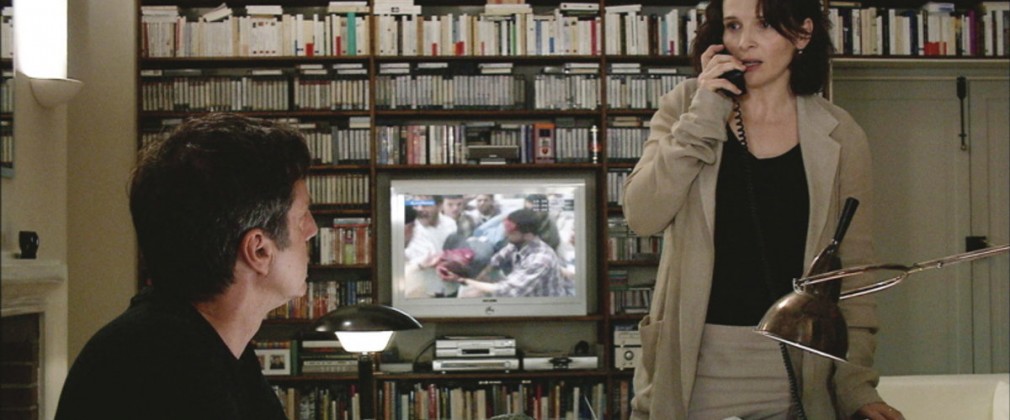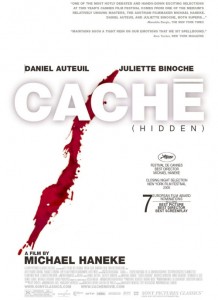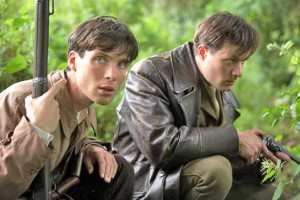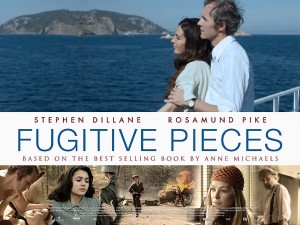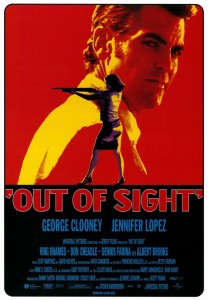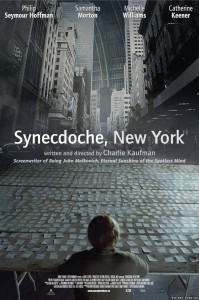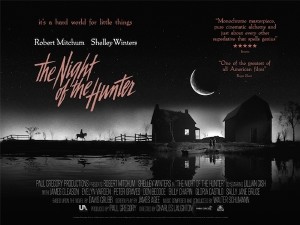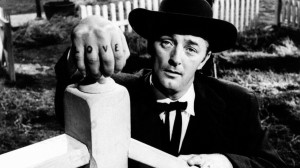From 2005 to 2009 I was a programmer on CKDU 88.1 FM, every Sunday morning hosting The Love & Hate Movie Show. I talked about what I was seeing and revisited some of my favourite films of old, pretty much what I do now here on FITI. I still have a lot of the scripts from those days, and thought I should share them here for archival reasons—and just for fun.
Here are a selection of some of the best films I saw through those years, and a few I revisited from the past.
Cache (Hidden) (2006)
This is a real head-scratcher from Michael Haneke, but I mean that in the most flattering way possible. It’s a story about an upper-middle class Paris family, intellectuals, parents, 40-somethings named Georges and Anne, played by Daniel Autiel and Juliette Binoche, and their 12-year-old son, Pierrot.
Someone has been sending them videotapes in the mail, videotapes of their home. Someone is watching them, all the time. Someone who knows a lot about George’s past.
There are an enormous amount of static shots in this film, everything is very still as the audience are compelled to become voyeurs of the characters’ fracturing of lives. We have to piece things together ourselves. It’s certainly a psychological thriller, but as it goes along, it also becomes a message film about the comfort level of white, western society and how it treats foreigners and immigrants.
It also becomes about the mediated life, and how we become separated from reality through television, protected, and maybe desensitized, in our comfort. The sets, the look of the film is very austere, and there is absolutely no soundtrack, though sound is very, very important.
It’s a really different picture, occasionally frustrating and deliberately unresolved, leaving more questions than answers. Beyond this there are moments of shocking violence. Conversation becomes important. Is one character having an affair with a supporting character? What are the motivations of the younger generation in the piece?
There’s a great deal of intelligence of the script and the direction. Autiel does excellent work, and Binoche is a wonderful, emotional centre to the film. See it with a puzzle-loving friend and prepare to spend some time afterwards talking about the film.
I need to say a few things to both those who haven’t seen it, and those who have, hopefully without spoiling any surprises for the former group:
Is Anne having an affair? Could be. I don’t get the sense that Pierrot really communicates with his parents, or they with him… there are a few moments where I really suspect Georges and Anne are lying to their son.
I love how the film works in its study of class and cultural differences. Check the racially motivated anger when a cyclist almost runs Georges down in the street. An Algerian father and son play roles in the story, and you get hints that their relationship has a far more open communication— that they really care about each other despite the generation gap. That’s something amiss with our central family.
There is a storytelling clue in the final shot of the film, which takes place on the steps of Pierrot’s school where two characters meet who shouldn’t know each other. They have a conversation, and though we don’t hear it, it looks very friendly. Make sure you have your eye on the upper left of the screen to see it.
It suggests the younger generation might make for a better future, or maybe that they are as dishonest and messed up as their parents were when they were young. Discuss amongst yourselves.
Blade Runner: The Final Cut (2007—1982, 1992)
So, what is this? The fourth or fifth version of this film? The second (or third), 1992’s Director’s cut, removed a voiceover, a happy ending, and added unicorn imagery.
Now we’re getting to see it again. Besides a digital print, what more does this one have to offer?
For those who don’t know, here’s the story: Deckard (Harrison Ford) is an LA cop in 2019. He’s called a Blade Runner, the guy who “retires” any androids, those who are “more human than human,” who go renegade. A small group of them do, though they have a built-in safety: Their lifespans are only four years. Their desperate motivation is to have a longer life.
Among the androids: Rutger Hauer, Daryl Hannah, and Sean Young. Deckard hates his job and since the Director’s Cut, we especially get the sense that he himself might be a replicant, one of the androids. It makes sense from a practical standpoint: use a replicant to hunt replicants. But it’s never confirmed one way or another.
Themes of what it means to be human, to have a life, to love, all of this heavy stuff is thrown around, but I’d argue what makes the film special, and what has made it last in the imagination of fans, is the immersive production design, not the story. The plot is pulp noir mixed with existentialism 101. If you think about it too much it doesn’t quite hold up.
Directed by one of Hollywood’s greatest stylists, Ridley Scott—based on the Phillip K Dick novel Do Androids Dream of Electric Sleep?—he made his reputation on this and Alien, but he didn’t write either one. It’s his way with the look (and sound) of the film that has really inspired people over the years.
The images of a rainy, futuristic LA, the Vangelis score, the sound editing, the future seen as a dismal metropolis, both under- and overpopulated, with both great beauty in the neon nocturnal landscapes, humming airships, and artificial birds.
It’s hard to see how the film could at all be improved over this Final Edition. The digital print is faultless. It’s been cleaned up, a couple inconsistencies have been fixed with shots restored and added. And maybe the biggest plus: it’s a lot brighter. The lights and colours really pop.
If you haven’t seen it before, now is the time. God only knows what version they’ll release in November 2019.
The Lives of Others (2006)
Written and directed by Florian Henkel von Donnersmark, this is an Oscar winner for Best Foreign Language film. It beat Days of Glory, Pan’s Labyrinth, Water, and After The Wedding, and in that group of exceptional films, it is arguably the most satisfying.
It’s set in East Germany in 1984 and then later, after the fall of the wall. Writer Georg Dreyman is ostensibly loyal to the system but under observation by the Stasi—the secret police controlled by Minister Hempf, who covets Dreyman’s partner, actress Christa-Maria Sieland. The heart of the movie is with the surveillance operative, a loyal company man who begins to understand what the system is doing to this couple, and begins to empathize with them.
This is a suspense thriller, like a cracking novel you can’t put down, where one develops a huge sympathy for the lead characters as they’re put in ever tightening situations and you don’t know how they’ll behave, or how they’ll get out of them.
The look of East Germany in the era is perfect, plenty of grey men in grey suits. Nothing changes and everything grinds to a halt just before the fall of the wall. It explores the role of the individual inside the system, with compassion and a dawning realization that we all have the power to make a difference in the face of hypocrisy and deceit.
The Wind That Shakes The Barley (2007)
Social realist and class examiner Ken Loach’s The Wind that Shakes the Barley won the Palme D’or in Cannes, only the third film from Great Britain to win it. UK-based Loach was given a hard time by the British press over the depiction of the British Black and Tan forces as brutally inhuman and the Irish rural people’s militia as romantic freedom fighters, but I think that criticism misses the point somewhat.
The story, though political, really hits as a depiction of what war does to an average person just trying to live their lives. It has an opinion on the events in Ireland in the 1920s, but it really succeeds as a story simply about people and what they’re willing to fight and die for. In a word: Ideals.
Young doctor Damien (Cillian Murphy, the only actor in the piece who comes with any kind of star wattage) and his older brother Teddy (Padriac Delaney) are part of a small group of IRA soldiers who put the fear of god into the British occupiers. The first half of the film details how Damien is won over to join the IRA, and how he finds his toughness, his conscience.
What amazes is how naturalistic the performances are in the context of this historical picture. Loach has been known to hire non-actors, and he did again in this case. He also doesn’t give his actors the whole script, but just the details of the scenes they’re working on, and he tries to shoot in sequence so the actors develop the characters as they go along. They don’t know what their stories are going to be, how they will end. It’s a discovery the performers and the audience make together, and I really like that solidarity.
After a hard won truce is signed between the IRA and the British forces, the two brothers find each other on different sides of a national political divide. Damien wants to keep fighting and not swear allegance to the British crown, while Teddy becomes part of the governmental forces of the so-called Free Irish.
This is gripping stuff. It feels like a docudrama, both historical and contemporary, and reminded me of Gillo Pontecorvo’s The Battle of Algiers, not so much in its scale—The Wind That Shakes the Barley is a much smaller film—more in its ability to show war up close from a human perspective.
Loach is known in his films to have these town-hall meetings in his movies, were the issues are debated by the characters. That happens here too, but I think it works, it provides some historical background and gives the characters a chance to offer their perspective, even the ones history has proven to be misguided.
Fugitive Pieces (2006)
An extraordinarily sad and touching story of a man unable to let go of his past, haunted by the ghosts of his family. Jakob was born a Polish Jew, his parents killed by the Nazis while he hid, and his sister abducted. He’s saved by a Greek archeologist, Athos, and spirited to a remote Greek island where he spends some time before Athos accepts a position at the University of Toronto. Jakob grows up a Canadian, and becomes an academic and a writer, marrying the beautiful Alex, but he grows to resent what he calls her “shameless vitality”
And their relationship suffers as a result. Meanwhile he is friends with another family who lives in the same building as he does, also touched by war. Their son is born in Canada and struggles with being the child of a survivor.
Though I just recapped the basic plot in a linear way, it is in fact told through a series of flashbacks and flash-forwards, a literary but far from confusing storytelling device. It works really well here, and it means large swaths of time passes but it never feels clumsy or jarring. The early ’70s in Toronto mixes with the early ’40s Poland and Greece with the late ’50s Toronto… it all seems to work. The only limitations of the budget are some of the Toronto segments… it all takes place in the darkened apartments and we don’t see much of the town. But the enclosed space suits the mood of the film, whereas all the Greek exteriors come to symbolize a certain kind of growth and freedom, the shocking brightness and beauty a nice contrast to the other parts of the film.
The performances of the leads are wonderful. Stephen Dillane as Jakob has one of those faces you think you know. As it turns out, despite The Hours, there isn’t much of his work I’ve seen. You understand his pain, but you also clearly see the damage it does to his first wife, Alex, the wonderful Rosamund Pike—who was in the film version of Pride and Prejudice, Fracture with Anthony Hopkins and Ryan Gosling and in one of the Pierce Brosnan James Bond films. Here she’s so energetic, and Jakob just can’t open up to her. When she proposes to him on a street corner, it’s absolutely one of the most romantic scenes I can think of.
This version of the film ends a bit sooner than the one I saw the AFF in September 2007. It moves away from the book version, a darker, sadder ending. This one is a little more hopeful for Jakob and the new woman in his life, played by the Israeli actress Ayelet Zurer, who most western audiences would remember as Eric Bana’s pregnant wife in Steven Spielberg’s Munich.
Someone I know who saw the film complained that her character was flat and two-dimensional. I didn’t really think so. By the time she appears in the third act, I was already utterly wrapped up in the story. And even though I did see the earlier version of the film, which I think is more about how the generation after the survivors of war deal with that legacy, I wasn’t unhappy to see the more upbeat ending that is in cinemas now. I don’t think it compromises the story radically.
Either way, a beautiful film, a real tearjerker that earns its tears, and the best Canadian drama I’ve seen since Away From Her.
Out of Sight (1998)
This is Steven Soderbergh’s 1998 crime/comedy/romance, from the Elmore Leonard novel and adapted by Scott Frank, starring George Clooney and, in her best role to date, Jennifer Lopez.
That’s right: Jennifer Lopez absolutely rules as Karen Sisco. See it (and The Cell or Blood & Wine) and you’ll never doubt again that she has some serious acting chops. The chemistry between her and Clooney is the centre of this excellent, zippy picture, rooting it, and the rest just slides easily around them: great editing, a fractured timeline, and an absolutely stellar supporting cast including Luis Guzman, Catherine Keener, Ving Rhames, Steve Zahn, Don Cheadle, Albert Brooks, and in cameo roles, Michael Keaton and Sam Jackson.
Clooney plays bank robber and three time ex-con Jack Foley who can’t seem to go straight. While in jail on Florida, he gets word of a potential moneymaker in Detroit, as do a few of his fellow prisoners, but when he gets out, he has Jennifer Lopez’s law-enforcer Karen Sisco to deal with, and he can’t get her off his mind. She has a history with men who are bad for her, something her father, the great Denis Farina, keeps reminding her.
They are both characters who can’t help themselves, her attraction to bad men, him to robbing banks. They’re both a little tragic, but it roots this stylish genre film in a recognizable emotional place, giving it much more dramatic weight than some Leonard adaptations.
Add to that a terrific funk, soul and bossa nova soundtrack, this is the best film that we’ve seen since 1994 that could loosely be described as Tarantino-esque. That is, it works with the kind of elements he likes to play with, while easily matching his best work beat-for-beat.
The Visitor (2007)
Written and directed by Tom McCarthy, who wrote and directed a great little movie called The Station Agent.
What we have here is a gradual, but eventually very powerful film, an indictment of immigration policies in the United States. Walter (Richard Jenkins, the ghost dad in Six Feet Under) is a cranky professor at a Connecticut University who goes to New York City for a conference. When he arrives at his city apartment, he finds a young couple living there, Tarek and Zainab (Haaz Sleiman and Danai Gurira). He’s Syrian and she’s Senegalese. Instead of kicking them out, Walter invites them to stay, and he finds them enriching his life in unexpected ways, most profoundly, teaching him how to play a djembe. However, things don’t go so well for Tarek, and Walter starts to fully comprehend the plight of someone in the post 9/11 society if you don’t have a green card.
At the heart of the film is Richard Jenkins’ performance. He’s the character with the largest arc, the most to gain from spending time with people he otherwise never would have known. And he is great in the part, which might be his first lead role.
There are basically only four roles here that aren’t day players, and they’re all wonderful. You get a real sense of the pulse of New York City, both its beauty and ugliness. And the underlying these, that Walter represents the great, unknowing liberal whiteness of America, who might care if only they knew what was happening, is done with a lot of grace. In portraying the real life of immigrants, I think it’s the most honest and heartfelt story of where the east meets the urban west since Dirty Pretty Things. It’s probably more effective as it isn’t set up as a thriller, it’s more just a drama about something that probably happens every day.
If I had a gripe, it was that the plot develops so slowly. There isn’t much joy to be had here, even in Walter’s changes, they happen subtly. There’s a great scene where Walter first catches the rhythm of the drum and then goes to a drum circle in Central Park. Later he’s listening to Fela Kuti while driving and tapping his fingers on the dash. Generally, this is a film where not very much happens, but you can’t help but feel connected to these characters, so by the end, when something does happen, and there is real drama, it’s a heartbreaker.
As with The Station Agent, it’s a story of unlikely friends and what we can learn about ourselves when we get the chance to move outside our areas of comfort. And yes, at the same time, a hell of a look at how the US has a lot in common with some regimes we’d consider much more repressive.
Synecdoche, New York (2008)
Writer director Charlie Kaufman is one anxious dude. We’ve seen his neuroses writ large in Adaptation, where he and his imaginary twin is played by Nicholas Cage. His other work is no indication of a guy with a peaceful disposition. Witness his screenplays for The Eternal Sunshine of the Spotless Mind, Confessions of a Dangerous Mind, Human Nature or Being John Malkovich, maybe his most outrageous cinematic effort. Until this one.
Philip Seymour Hoffman plays Caden, a middle aged theatre director from upstate New York. He’s unhappily married to Adele (Catherine Keener, who also played an Adele in Out of Sight, interestingly), and has a daughter, Olive. Adele is a painter of extremely small paintings, but she has managed to get an exhibit in Berlin. Caden and Adele go to a therapist/author Madeliene (Hope Davis), who wears very tight, cruel shoes, that seem to be deforming her feet.
Caden secretly loves Hazel (Samantha Morton). When Adele goes to Berlin with her friend Maria (Jennifer Jason Leigh), taking Olive with her, Caden wins a grant of a large amount of money and, convinced he’s dying, decides to do something important, something epic. He buys a disused warehouse in New York City and recreates his life as theatre, with actors playing all the key roles, even his own, but he just goes through years of rehearsal without an audience.
Of course, we get to be the audience.
There are a lot of really charming and funny details. It’s the kind of film where people who like wordplay will find things to enjoy in the script, along with those who like meta and cyclical storytelling. There’s some amazing casting—some of the best actors in the business; Keener, Jason Leigh, Morton, Michelle Williams, Diane Weist and as Morton’s character’s doppleganger, Emily Watson. They’re all brilliant.
This is a typical Kaufman story, in some respect. It’s a story about storytelling and it has the unmistakable autobiographical tang. Its also, for much of it, wildly self-indulgent.
Caden is a miserable guy, he’s poking through his own fecal matter and seeing himself in ads for chemotherapy medication, and as Kaufman’s proxy, he, of course, never really finds any lasting happiness in his obsessions and life. It’s all regret and unfulfilled ambitions and the realization that we all die sometime.
Maybe a pretty depressing vision, but I wasn’t depressed by it. I’m a little embarrassed to admit that somehow I related to Caden and, maybe this is an indicator of my sullen self, but I didn’t have much trouble seeing things the way he did. I felt for him, and in the final act, I was quite hynotized by the whole affair.
I really felt Caden’s loneliness. As Adele pretty much disappears in the second half of the film, you really feel Caden’s loss of his wife and daughter, she absolutely haunts the latter part of his life. But there’s enough absurdity in all of this it reminds us we shouldn’t take all of this too seriously.
Night of The Hunter (1955)
This film inspired the name of my radio show, and was referenced in both Do The Right Thing and Raising Arizona. It was the only movie directed by actor Charles Laughton, most famous as an actor for his portrayal of The Hunchback of Notre Dame in the 1939 version.
Shot in high-contrast black and white, it stars Robert Michum as a psychopathic crook Harry Powell, who chases two children across the midwest US. The two kids, a brother and sister, know where their ex-con father hid his ill-gotten money, and Powell wants that money. Mitchum’s Powell dresses as a preacher so the rural folk will trust him, and he seduces the kids’ mother, played by Shelley Winters in one of her best roles.
It’s a film full of weird characters saying strange things, and shot with incredible imagination. The play of shadow and light become as much part of the story as the actors playing their parts. Certainly it’s been a huge influence on modern filmmakers, not only Spike Lee and the Coen Brothers, but David Lynch as well.





